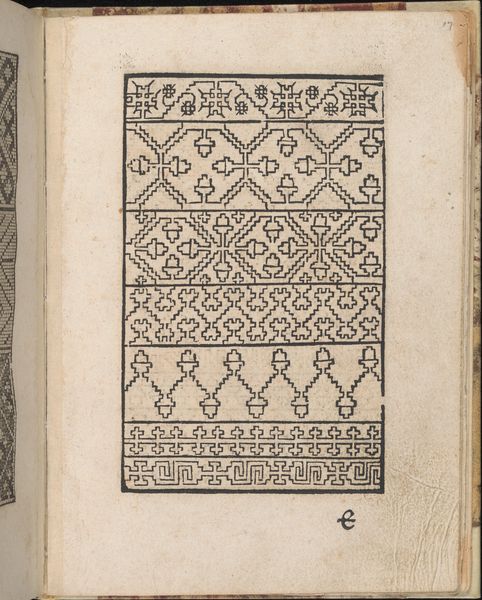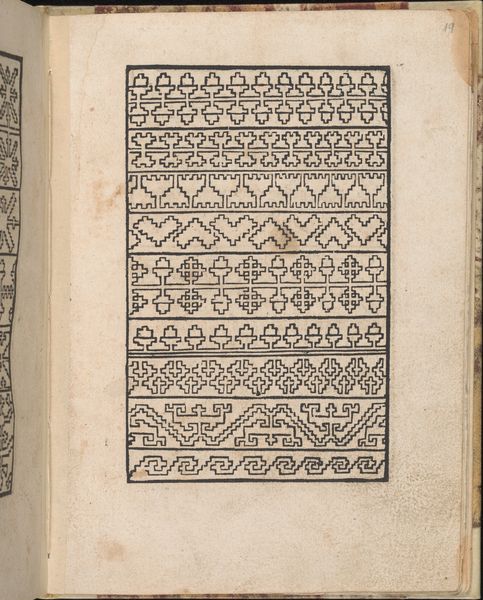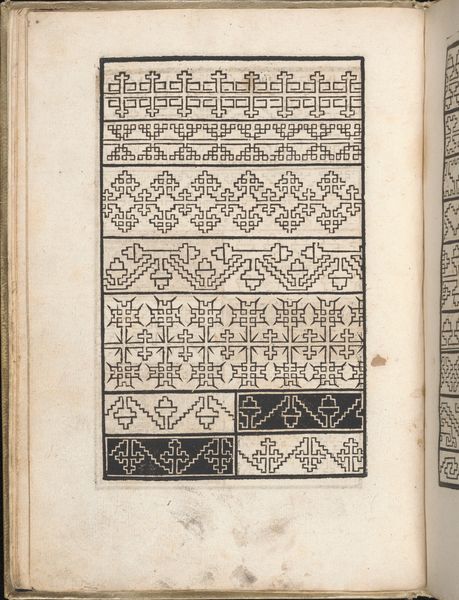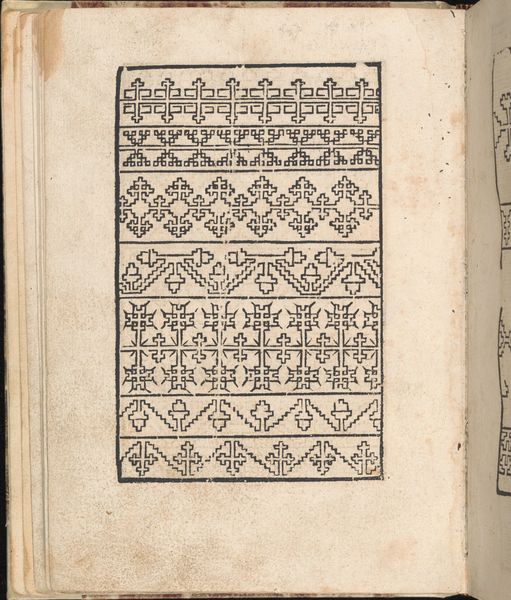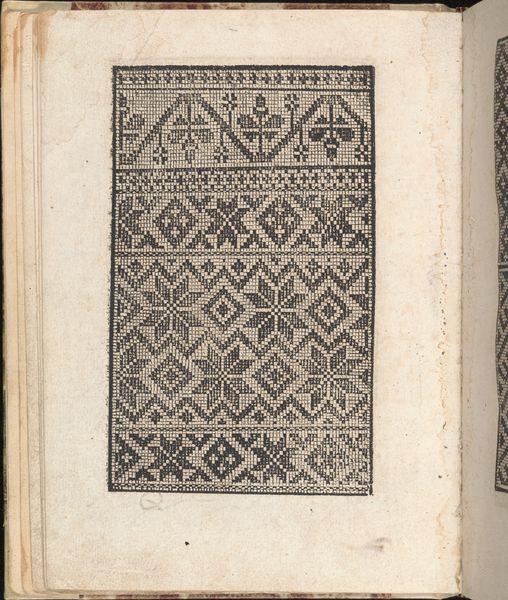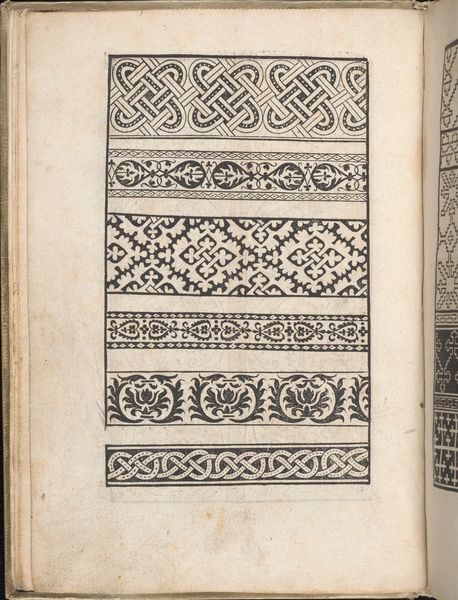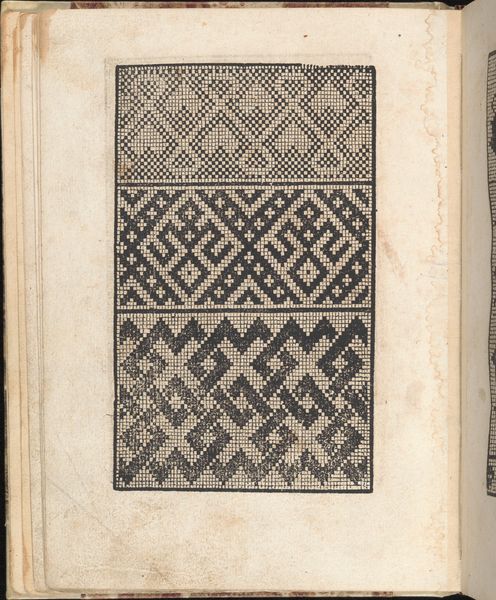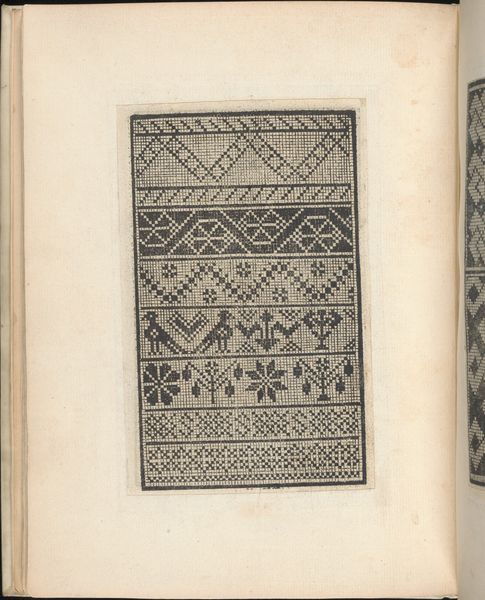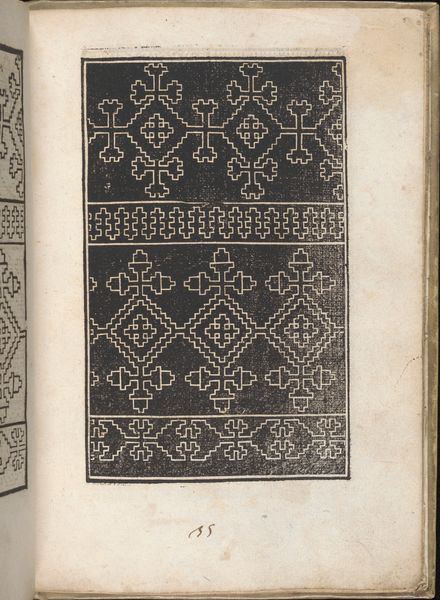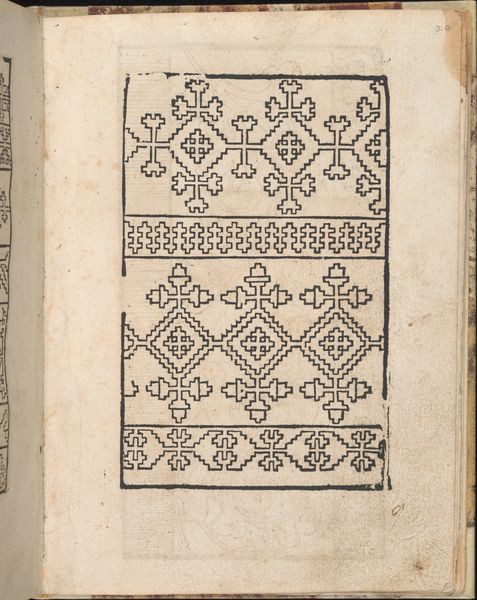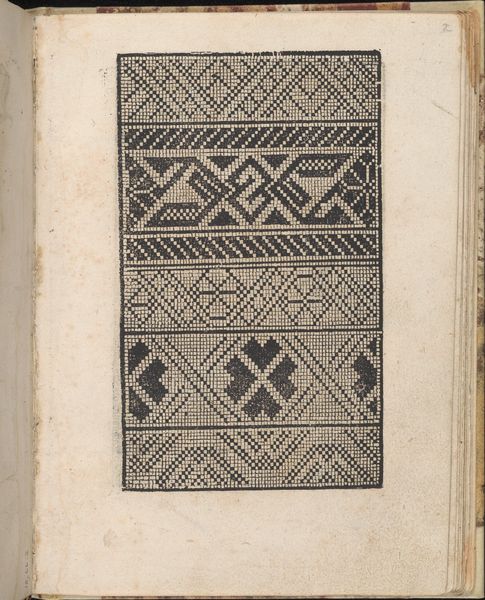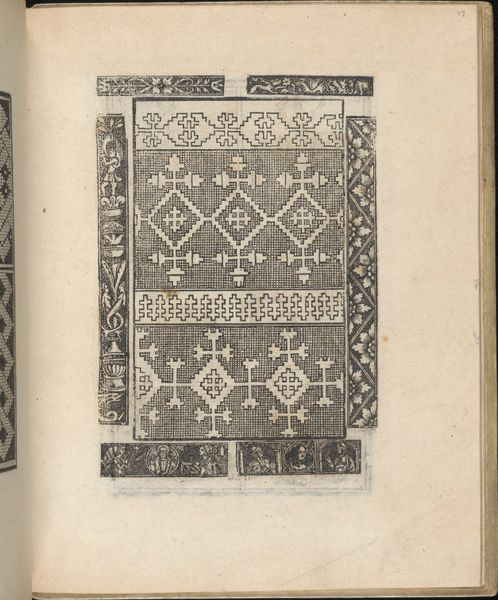
Ein new getruckt model Büchli...Page 18, recto 1529
0:00
0:00
drawing, graphic-art, ornament, print, woodcut
#
drawing
#
graphic-art
#
ornament
# print
#
11_renaissance
#
woodcut
#
northern-renaissance
Dimensions: Overall: 7 7/8 x 6 1/8 in. (20 x 15.5 cm)
Copyright: Public Domain
Editor: We're looking at a page from "Ein new getruckt model Büchli..." by Johann Schönsperger the Younger, printed in 1529. It's a woodcut, so black lines on a creamy page. At first glance, it reminds me of those sampler patterns – very structured. What strikes you about this page? Curator: Ah, yes, the disciplined charm of early pattern books! Imagine ladies of the Renaissance, poring over these pages by candlelight, plotting their needlework. It’s more than just decoration; it’s a glimpse into their lives, their skills, their ambitions, all distilled into these precise geometric forms. Do you notice the repeating motifs, like those almost-crosses? Editor: I do, yes! They look almost pixelated now. Was this intended just for needlepoint, or could these patterns have been used for other crafts, too? Curator: Needlepoint was a popular choice, but the genius of these books lies in their adaptability. Imagine the patterns inspiring designs in other crafts – inlaid woodwork, decorative painting, even metalwork. These aren’t just patterns; they’re seeds of artistic inspiration, sown across an era. And that crude yet perfect simplicity of line! I wonder, were those 'errors' intentional? Editor: That's such a neat concept! I hadn’t thought about it like that, that mistakes can be used as guide points. I thought they were design oversights. So it was about being adaptive to other skills as well as different abilities? Curator: Precisely. And even more: the ability to elevate what could be viewed as imperfections, a very avant-garde attitude when considered from our point in time. Editor: That really reframes my perspective. I initially saw rigidity, but I now notice fluidity. I can better visualize these motifs bleeding across into various other forms, like jewelry and other crafts. Curator: See? A book is always so much more than just the sum of its pages!
Comments
No comments
Be the first to comment and join the conversation on the ultimate creative platform.
